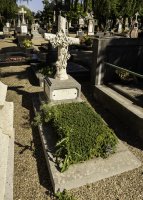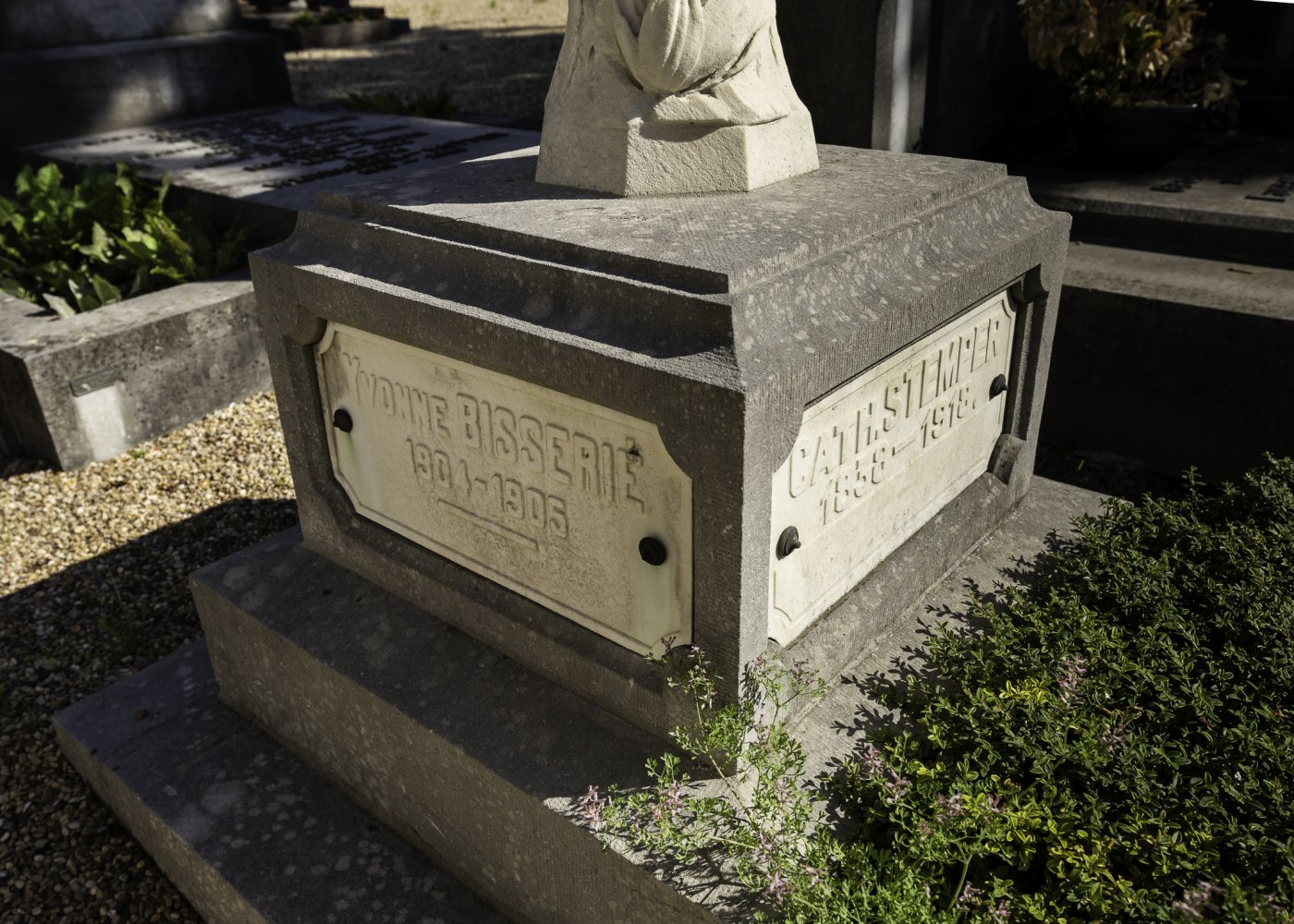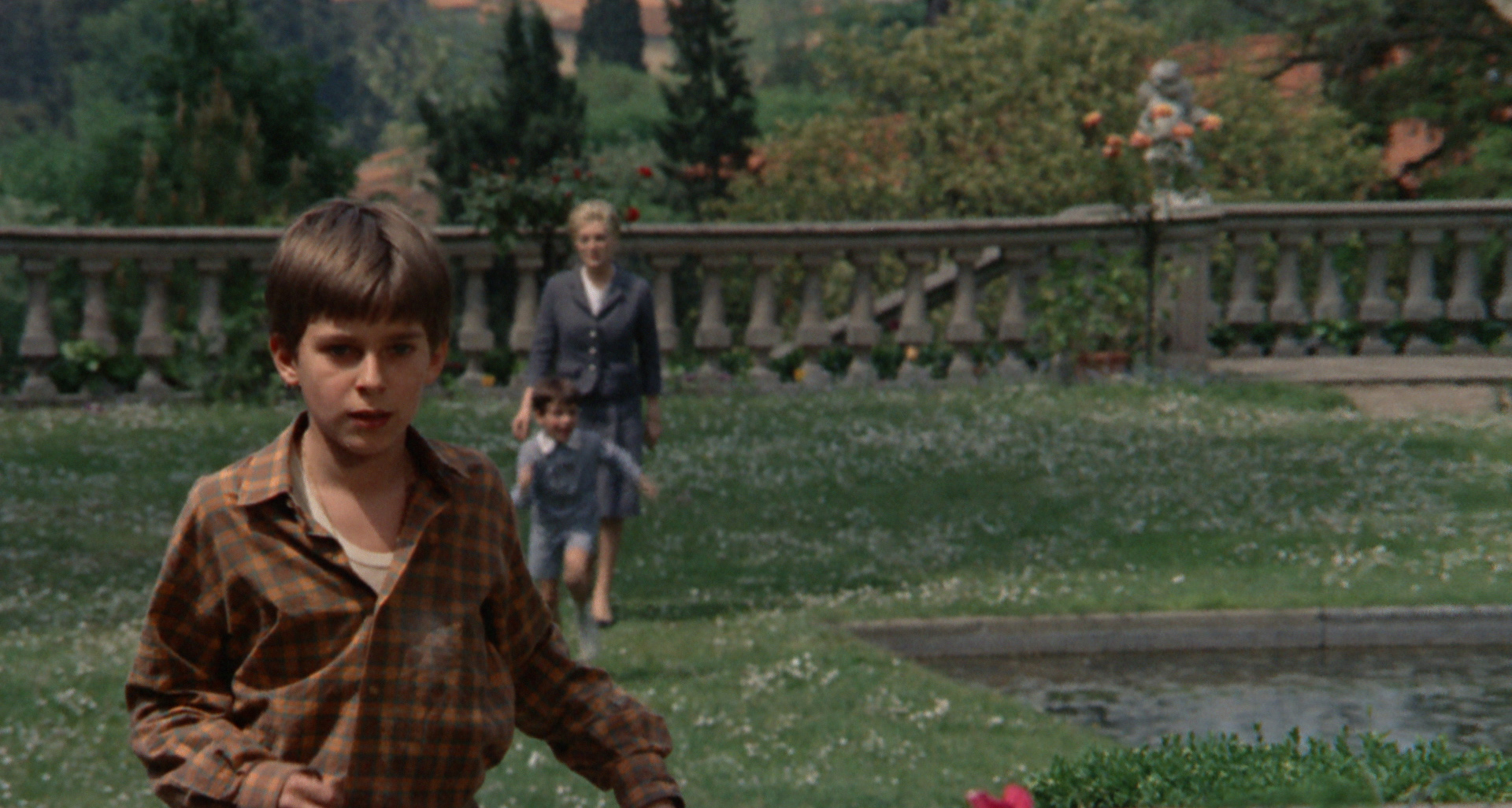Description
This grave, taken over by the City of Luxembourg in 2014, forms a contiguous unit with those around it in the first row, near the main entrance. It was decided to keep the burial monuments in their original location.
This monument is an example of how industrially pre-fabricated components can converge to form a single entity. The base displays inscriptions about the family members buried there. The cross is set back and stands over a small garden, which encourages visitors to keep a respectful distance. Tending to a grave offers a way to commune with the deceased and contemplate one's own fleeting existence. This monument is heavily imbued with symbolism: the limestone cross resembles tree bark. The tree of life calls to mind faith in the hereafter. The rose encircling the cross symbolises love and passion. However, it is broken on top, signifying a life ended before its time.
The broken rose seems to be mourning the death of Yvonne Bisserié, who was born on 31 July 1904 and passed away when she was just one year old.
The plot was later transferred to Eugène Stemper's family. Catherine Felten (1838–1918) married Eugène Stemper (1842–1908), a chair manufacturer in Luxembourg City.

















